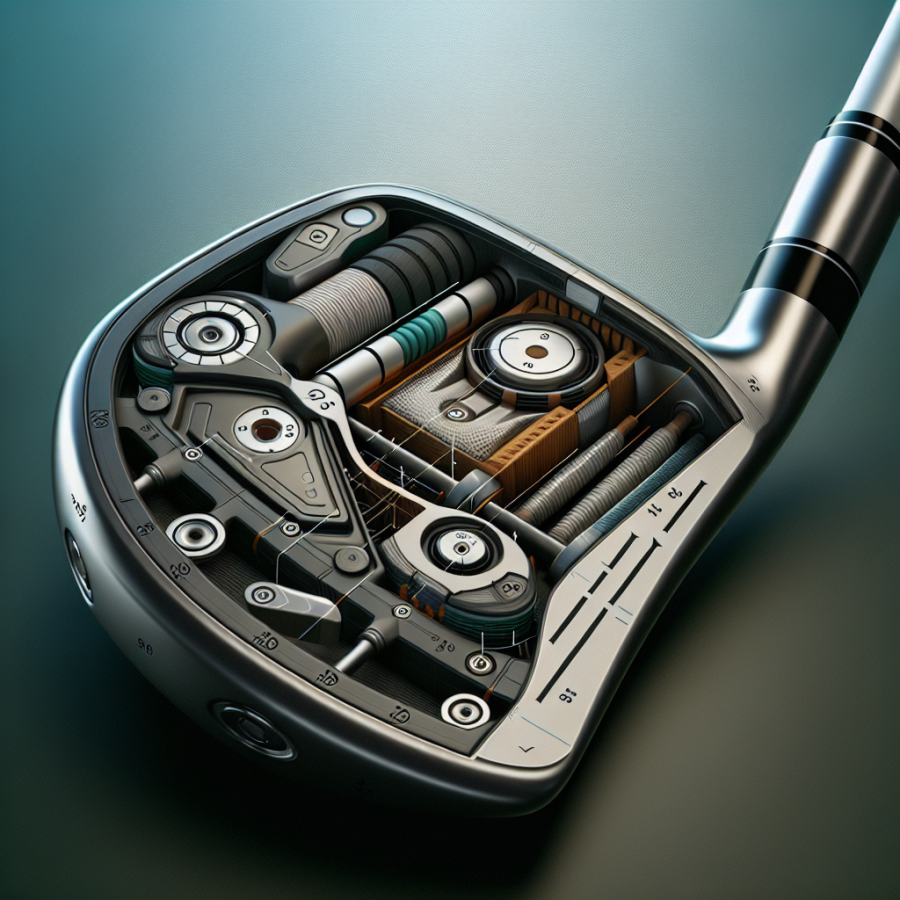Deconstructing the Dynamics: The Functionality of Golf Clubs Unveiled
When trying to comprehend the functionality of golf clubs, there are several components we need to consider - from the type of clubface to the composition of the shaft, to the design of the grip. These unique components come together to form a club that can greatly factor into the performance and success of a player’s game. Here's how they genuinely work:
Golf Club Components and their Detailed Impact:
1. The Clubhead:
The clubhead, the part of the golf club that strikes the ball, plays a significant role. The type of clubhead used dramatically changes the direction, spin, and distance the ball will travel. The smaller the clubhead, the more precise the hit. Larger clubheads provide more power, making them ideal for long-distances shots, while smaller clubheads are more suitable for short-distances.
2. Clubface:
The clubface's design is another essential component to consider. Smooth clubfaces are used for distance and speed, whereas grooved clubfaces are designed for control and spin. The angle of the clubface, or 'loft,' also affects the launch angle and spin rate of the shot. A golf club with a higher loft will make the ball rise higher and spin faster.
3. The Shaft:
The shaft of the club is the long, slender part that connects the golfer's hands to the clubhead. The length, flex, and material of the shaft can all influence the performance of a golf shot. Longer shafts can potentially create more speed but may sacrifice control. The flexibility of the shaft also influences the trajectory and distance of the shot. A stiffer shaft is suitable for players with a fast swing speed, while a flexible shaft works better for slower swing speeds.
4. The Grip:
The grip of a golf club is the part that the golfer holds. A good grip can improve a player’s control over the shot. The texture, size, and material of a grip can dramatically impact comfort and performance.
5. The Bounce:
The bounce of the golf club is the angle between the front, leading edge, and the part of the club that hits the ground. The rating of the bounce angle can influence how the club reacts upon impact. Clubs designed for soft conditions generally have a higher bounce, preventing them from digging into the ground.
Understanding the Science of Swing Physics:
The science behind the swing is also a crucial factor in the functionality of golf clubs.
Read also:
The Subtle Joys of Mastering English: A Linguistic Journey
The Physics and Engineering of Golf Clubs: Essentials Explained
The physics and engineering of golf clubs play a significant role in the players' performance and scoring. Both professional golfers and golf club manufacturers continually try to understand and harness the science behind golf clubs to get the most benefit during a game. The core principles of physics involved in golfing include Newton's laws of motion, the coefficient of restitution, torque, and moment of inertia.
The first thing to understand about golf clubs is how they convert the golfer's strength and swing power into the force that propells the golf ball. According to Newton's second law of motion, Force equals mass times acceleration (F=ma). When a golfer swings the club, they generate kinetic energy, which is then transferred to the golf ball. The efficiency of this energy transfer can greatly affect the ball's distance and direction.
Next comes the role of club head design in affecting the club's momentum. The theory of coefficient of restitution (COR) is handy here, which measures the efficiency of energy transfer between two colliding objects, or in this case, between the club head and the golf ball. Golf club manufacturers use materials and designs to maximize the COR so that golfer can get the most distance out of each swing. While the limit set by the United States Golf Association (USGA) for the COR of clubs is 0.83, manufacturers strive to get as close to this ceiling as possible.
Torque, a concept that originates from rotational mechanics, also plays a significant role in golf clubs' science and engineering. Physics defines torque as the force that causes rotation. To minimize the amount of twisting at the moment of impact, manufacturers often use MOI, or moment of inertia, a measure of an object's resistance to rotational motion. The design and weight distribution of the shaft and club head can significantly affect the MOI, thus influencing the club's stability and accuracy.
The material of the golf club also has a hefty impact on a player’s game. Formerly, clubs were made using wood, but most modern golf clubs are now manufactured using metals like titanium, steel and sometimes an alloy or carbon composite. These materials offer more power, control, and durability than traditional woods.
Additionally, each type of golf club, such as irons, woods, and putters, requires different design principles. For example, woods are designed with a larger club head and lower loft to maximize distance, while irons have a higher loft and smaller head for more controlled shots.




